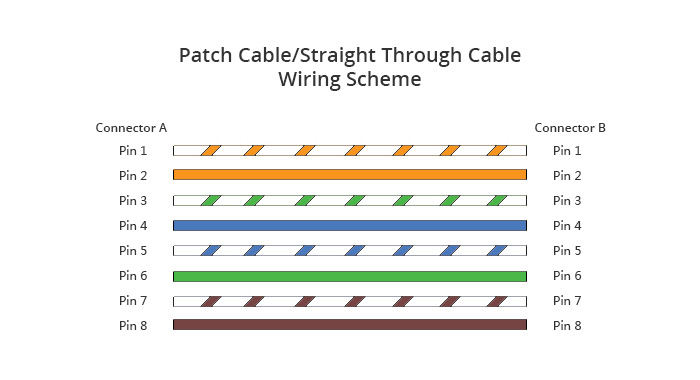T-568A vs. T-568B
Before talking about patch cable, it’s very necessary to learn about the T-568A and T-568B standard. With regard to these two patch cable wiring schemes, there are two different connectivity forms. The T-568B wiring scheme is by far the most common, though many devices support the T-568A wiring scheme as well. If both ends of the patch cords are wired on the basis of one standard, it is a straight through connection. Both the standards can be used for straight through cable. If not, it is a crossover connection. Some networking applications require an Ethernet crossover cable, which has a T-568A connector on one end and a T-568B connector on the other. This type of cable is typically used for direct computer-to-computer connections. The following section will introduce the straight through cable (or patch cable) and crossover cable in details.

What Is a Patch Cable?
Many networking professionals use the term patch cable to refer to any kind of straight through cable. So a patch cable is often called a straight through cable. In other words, patch cable does not change or swap along its way. Both ends use the same wiring standard: T-568A or T-568B. So both side (connector A and connector B) of patch cable have wire arrangement with same patch cable colors (as shown in the following picture). Specifically, Pin 1 on connector A goes to Pin 1 on connector B, Pin 2 to Pin 2, etc. These patch cables are widely used for connecting the computer to the switches, hubs, or routers.

 汉信
汉信

